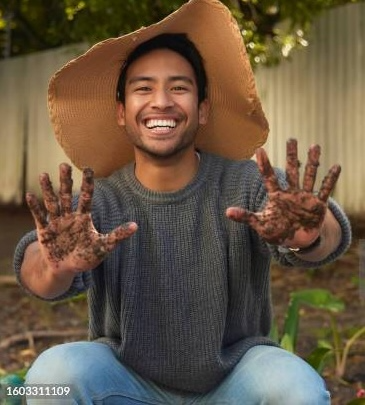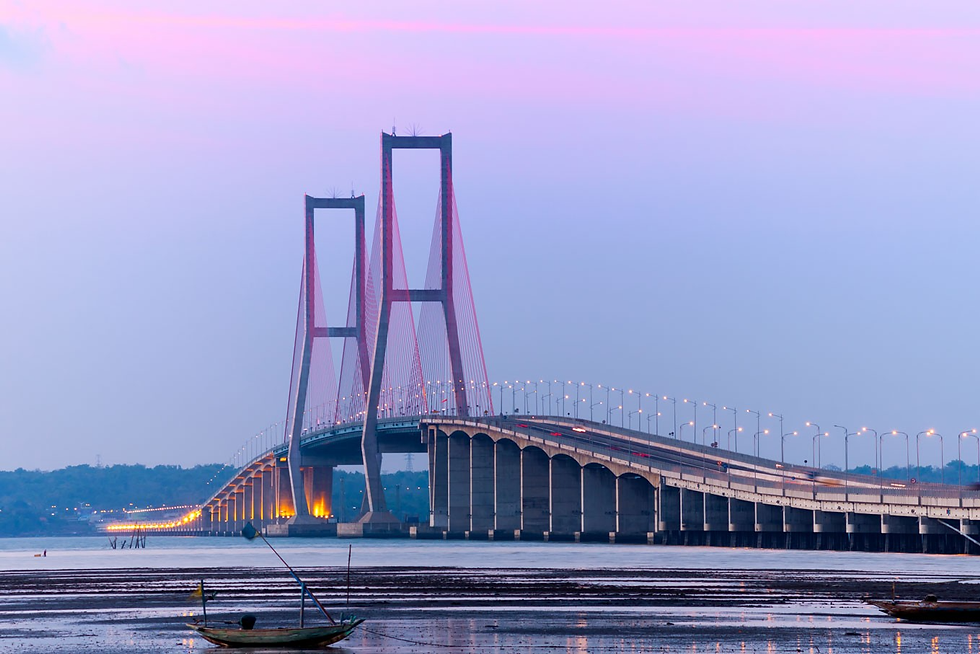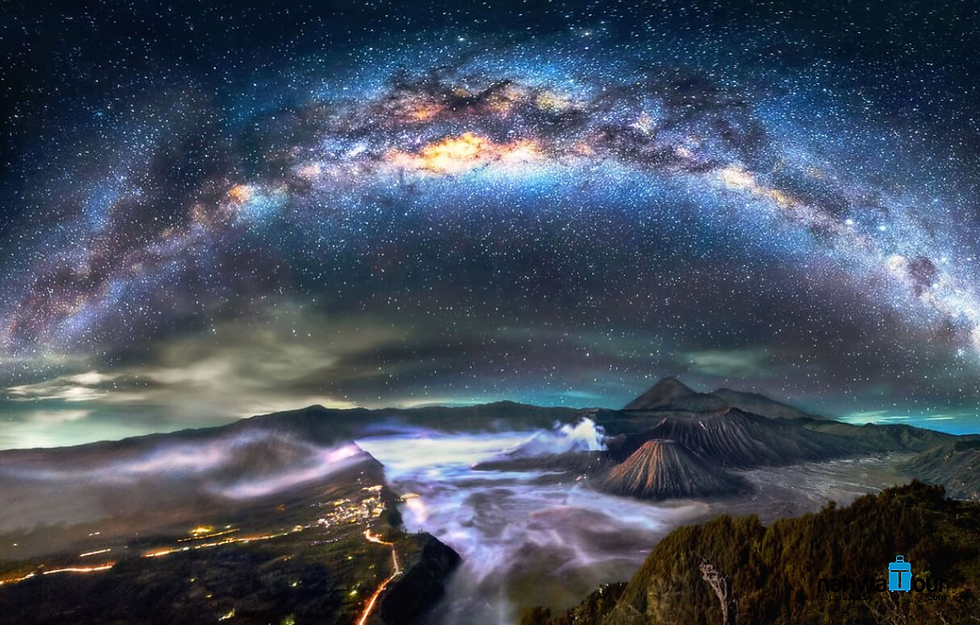East Java and the Fine Art of Getting Lost
- tripping8
- 7 days ago
- 8 min read
Updated: 6 days ago
There’s something faintly absurd about the way we pursue fun - like a cat chasing a laser pointer it will never catch. Modern leisure has been domesticated, declawed, and dressed up in marketing copy. The same adventures are endlessly recycled: “authentic cultural experiences” curated by people who’ve never been farther east than an airport lounge. It’s why so many travelers end up in places that all look the same: filtered sunsets, infinity pools, cocktail in hand, soul quietly slipping away. Everyone’s chasing authenticity, but only as long as it comes with Wi-Fi and room service.

Indonesia, though - it resists that. It’s too sprawling, too stubborn, too gloriously contradictory to be streamlined into a single narrative. Here, the cities breathe with a kind of deliberate aliveness. And aliveness isn’t comfort – it’s when your plans unravel just enough for something unexpected to slip through: a misread sign, a broken-down bus, a street food stall that changes the course of your digestive faith. In Indonesia the countryside hums with old gods who never got the memo about monotheism. It’s a place where the street vendors will talk to you about politics between frying tempeh, and where your Grab driver might offer unsolicited advice about your love life halfway through a monsoon.
Most visitors, of course, bypass all this and make a beeline for Bali, chasing that well-curated serenity of coconut yoga and rice-field enlightenment. But just across the water, East Java sits there smirking - leaner, smokier, less rehearsed. It’s the scruffy older cousin who knows where the real parties are and doesn’t care if your sandals get ruined. Here, between Surabaya’s industrial sprawl, Malang’s misty charm, and Mt. Bromo’s ash-smeared majesty, the fun isn’t handed to you - you have to go out and find it, usually by accident.
So, if you’re ready to trade the predictable for the improbable, “East Java and the Fine Art of Getting Lost” is a guide to East Java’s strange little miracles - a place where fun wears a crooked grin and the best stories come with a faint smell of clove smoke and sulfur. A reminder that fun, when done properly, should leave a little dirt under your nails.

Surabaya: The Grit and the Grace
Surabaya doesn’t seduce you, it’s too busy being alive. It elbows you in the ribs with its tree-lined streets and hands you a clove cigarette. With roughly 3.2 million people packed into its sprawl - or closer to 10 million if you count the greater metro area - it’s Indonesia’s second-largest city, forever living in Jakarta’s shadow and refusing to care. Where Jakarta glitters and preens like a beauty queen on borrowed time, Surabaya is the tough older sister who fixes her own motorbike and laughs too loud at her own jokes. Real - gloriously, unapologetically real.

Outside, Surabaya unravels in all directions at once - a cacophony of scooters, steam, and shouted bargains, pulsing with restless life. But inside the Hotel Majapahit, - the place to stay in Surabaya if you want to experience old Java and service the way it used to be - the noise fades as if someone has turned down the century.

The air smells faintly of jasmine and polished teak; the chandeliers drip with the kind of quiet opulence that makes you forget what year it is. Built in 1910, and having hosted everyone from Charlie Chaplin to Joseph Conrad, this is no ordinary five-star hotel - it’s a time capsule with room service, a colonial relic so beautiful you don’t stay here so much as you linger, reluctant to rejoin the world outside.

Once the site of a fierce anti-colonial protest, the hotel still carries the restless energy of unfinished business. If you don’t stay a night or two here when you’re visiting, you’re missing one of the highlights of Surabaya. Sure, some guests whisper about flickering lights and footsteps in empty corridors. But Surabaya’s ghosts don’t moan; they smirk.
For the living, the real haunt is Pecinan, the city’s Chinatown - a maze of alleys perfumed with garlic, soy, and exhaust.

Here, you’ll find lontong balap (rice cakes and bean sprouts in sweet broth), tahu tek (tofu with egg and peanut sauce), and the infamous rujak cingur, a salad of fruit, vegetables, and cow snout that defies explanation and possibly theology.

You eat it standing up, next to a sweating man who doesn’t look entirely convinced by his own lunch either, and suddenly you’re both laughing - proof that culinary terror can be its own kind of communion.
For a change of pace - and possibly dimension - cross the Suramadu Bridge to Madura Island.

It’s 5.4 kilometers of steel and wind connecting Java to Madura Island. Crossing it feels like a small act of rebellion. On the Madura side, life slows to the rhythm of salt farms, quiet villages, bull races, and satay that tastes like smoke and defiance.
Before you leave Surabaya, stop by the Submarine Monument (Monkasel) - a real Soviet-built sub parked, for reasons no one has adequately explained, in the middle of downtown.

You can climb inside, peer through its periscope, and imagine the absurdity of naval warfare being repurposed as family entertainment. It’s Surabaya in miniature: strange, proud, a little chaotic, and completely uninterested in whether or not you understand it.
Malang: The Cool, Collected Rebel
If Surabaya is Java’s industrial heartbeat, Malang, about a 2-hour drive south from Surabaya, is its exhale - misty, it has a kind of old-school cool that feels half European, half dream. Nestled in the highlands, it was once the Dutch colonial elite’s retreat, and it still carries that faint air of nostalgia, like a postcard left too long in the sun.

Beautiful tree-lined boulevards give way to crumbling villas with peeling shutters and overgrown gardens, ghosts of a quieter era peering through the vines. Even the light here behaves differently - gold and gentle, lingering on the tiled rooftops and mossy stone walls as though reluctant to leave.
The first stop is Kampung Warna-Warni Jodipan, the Rainbow Village. Once a gray, forgotten riverside slum destined for demolition, it reinvented itself through a kaleidoscope of color – a university art project that became a social movement.

It’s cheerful, chaotic, and a bit cynical in its self-awareness - like someone wearing joy as performance art. Every wall is a canvas, every alleyway, an argument against despair. Children sell hand-painted postcards while old women gossip from doorways, the entire village humming like a beehive of optimism.

It’s not subtle, but then again, neither is survival.
When you’ve had your fill of colors, go for something greener. Head toward Batu, Malang’s cooler, greener cousin where the air smells of apples and rain. The city is filled with rolling hills flowers. But it’s the apple orchards that draw the crowds - rows of fruit trees heavy with promise.

You can go and pick the apples yourself – not likely not the most exciting event on your itinerary, but there’s something absurdly wholesome about biting into an apple in tropical Indonesia, as if you’ve stepped through a tear in the tropics and landed in a misplaced autumn.
If you’re in the mood for something surreal, spend an afternoon at Museum Angkut, a sprawling carnival to transportation where vintage cars, airplanes, and Hollywood movie sets coexist in cheerful delirium.

Imagine a place where a 1950s VW stands next to a wax figure of Marilyn Monroe, and you’ll still be underestimating the madness.
As for places to stay, you’d be missing out on one of Malang’s most sublime experiences if you didn’t stay at the Hotel Tugu - part museum, part fever dream, and entirely unforgettable. It doesn’t just tell Indonesia’s history; it seduces you with it.

Consistently listed as one of the best and most unique hotels in the world, the lobby alone feels like a scene from a forgotten novel - carved teak doors, Javanese statues lit by oil lamps, the faint scent of sandalwood clinging to the air. Every room is a love letter to some fragment of the archipelago’s past: Chinese porcelain, Balinese carvings, colonial portraits whose painted eyes follow you with unnerving curiosity. And just when you think you’ve seen it all, you turn a corner and there’s more to see.

You don’t simply check in - you drift backward in time, into a version of old Java, where myth and memory share a cigarette in the courtyard. It’s the sort of place where the nights seem longer, softer, and just possibly haunted in the most beautiful way.

Mt. Bromo: Where the Earth Breathes Smoke
Mount Bromo is an active volcano within the Bromo Tengger Semeru National Park and no matter how many postcards you’ve seen, nothing prepares you for it - the first hint of dawn over Bromo’s caldera.

The ground trembles, the horizon bleeds orange, the air tastes of sulfur and cold metal, and the volcanic mist curls up like incense from the underworld. It’s less a view and more a confrontation.
Once the light spills across the Sea of Sand, a vast, ashen expanse that covers the base of the caldera of Mt. Bromo, the whole landscape turns lunar. You can race across it in a battered 4x4, channeling your inner Mad Max,

or wander slowly until you hit the Whispering Sands - dunes that make a faint hiss when the wind sweeps across them, as if the earth itself is trying to remember something it lost. There are times when you almost feel like you’re walking on the surface of Mars.

Beyond that lies Jemplang Valley (once, embarrassingly known as Teletubbies Savanna) a stretch of green so surreal it feels like someone pasted a children’s show onto a volcano.

If you’re lucky (or blessed by the calendar), you’ll catch the Yadnya Kasada festival - the annual offering of the Tenggerese, a Hindu community that’s lived around Bromo for centuries. They climb the crater rim to throw offerings - vegetables, live chickens, sometimes money - into the volcano as gifts to the gods.

It’s hauntingly beautiful, an act of faith both ancient and that seems entirely sensible in a place that constantly reminds you the ground beneath your feet is alive.
If you’re feeling really adventurous, stay overnight. The air gets impossibly clear, and the Milky Way appears in full, unfiltered arrogance.

You’ll find yourself staring up at the sky and wondering when you last felt this small, this awake, this quietly grateful for being here at all. A truly cosmic encore to a day that already feels mythical.
A Brief Meditation on Fun
Fun, real fun, isn’t clean - and it almost never photographs well. It’s not the smiling selfie or the perfectly timed hashtag sunset. It’s the offbeat conversation with a stranger who insists you try something unpronounceable. It’s the way your clothes end up smelling faintly of clove smoke, rain, and a bad decision that somehow turned out right. It’s the moment you realize you’ve lost your plan but found your rhythm. Travel writers like to talk about “hidden gems”, but East Java isn’t hiding anything. It just doesn’t care whether you notice. It’s a place that refuses to play along with the curated version of travel the world keeps trying to sell you.
Surabaya hums with a kind of muscular pride, a city that refuses to sand down its history. Malang drifts through its own dream – part colonial nostalgia, part youthful defiance - reminding you that history and hope can share the same cracked façade. And Bromo, looming in the distance with the calm indifference of a god who’s seen too much, humbles you until you stop pretending to be the main character. Together, they form a kind of pilgrimage - not toward enlightenment, but toward the gloriously messy business of being alive.

East Java doesn’t care whether you find yourself. You come here to lose things - your itinerary, your expectations, your curated sense of cool. You come here expecting adventure and a few photo ops. What you get instead is something slower, stranger – a reminder that the world doesn’t exist to entertain you. And to discover, somewhere between sulfur and sunrise, that fun isn’t a product. It’s a side effect. It’s what happens when you finally stop trying to manufacture it.
In East Java, fun doesn’t come prepackaged or promised. You earn it – one missed turn, one wrong train, one small act of surrender at a time. And if you’re lucky, you leave with nothing polished, nothing filtered - just a faint trace of ash on your shoes, smoke in your hair, and the quiet satisfaction of knowing you got lost exactly where you were supposed to.
#EastJava #MtBromo #Surabaya #Malang #JavaTravel #HiddenIndonesia #TravelIndonesia #WanderAsia #CulturalTravel #SoutheastAsiaTravel #Volcanos #OffbeatTravel #AuthenticAdventure #TheFineArtOfGettingLost #AnyHigh




Oh my,
This sentence in your opening paragraph, “Everyone is chasing authenticity, but only as long as it comes with WiFi and room service” really struck me!
Your written tour of East Java makes me want to try surviving a 17 hour flight! Almost ….. but what sealed the deal for me was seeing the Milky Way. The picture was amazing, seeing it with my your own eyes could even convert the most cynical soul that doesn’t believe there is a God.
Thank you, thank you for that graphic description. I could almost smell the Jasmine!
Never explored East Java. Sounds amazing! Thanks for the tour. :-)